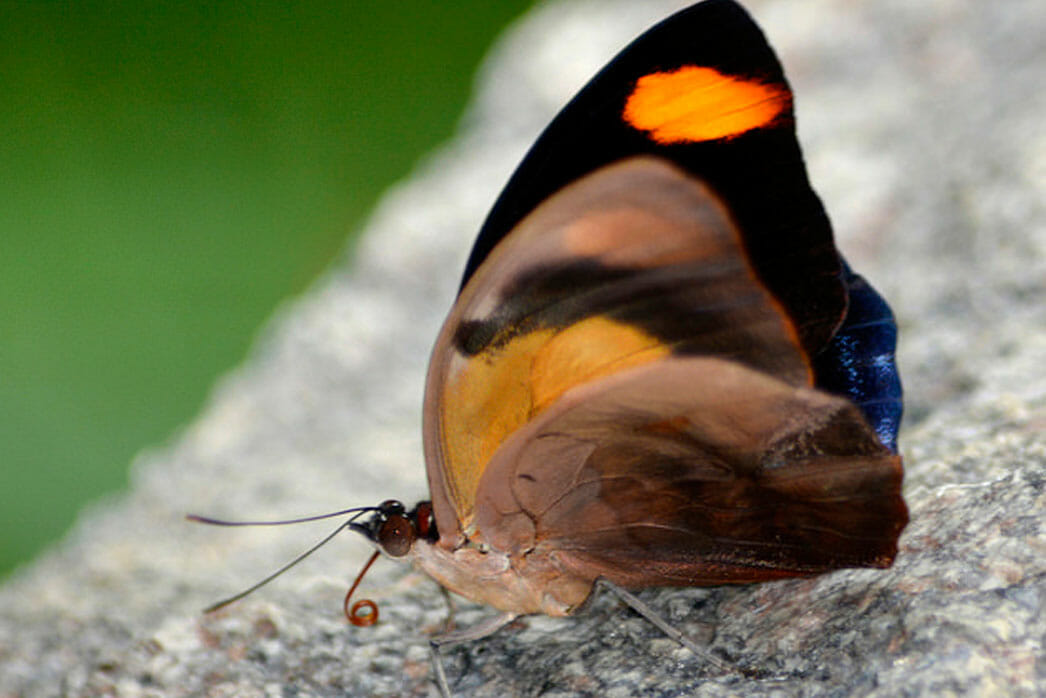Butterfly
At the Detroit Zoo
The Detroit Zoo’s Wildlife Interpretive Gallery houses hundreds of free-flying butterflies. The Zoo purchases about 250 butterfly pupae (chrysalises) each week from growers in Central America. The butterflies are raised by growers who maintain their own breeding stock; they are not taken from the wild but are part of an effort to promote butterfly conservation programs in those countries. Approximately 25 species can be observed engaging in many of their natural behaviors, including feeding on flower nectar or ripe fruit and basking in the sunlight. The garden is kept at a balmy 75 degrees Fahrenheit, the optimal temperature for the butterflies to take flight. The immersive habitat is open year-round and is free with Zoo admission.
A special behind-the-scenes experience called Breakfast with the Butterflies gives visitors the opportunity to learn about butterflies firsthand. During a continental breakfast, a zookeeper shares the secrets of butterfly watching in the garden and in the wild, followed by the opportunity to prepare chrysalises for display and to release new butterflies in the garden.
Many couples say “I do” at the Zoo, as the Butterfly Garden is a perfect setting for wedding ceremonies.
Description
Butterflies have their own skeleton on the outside of their bodies, called an exoskeleton. This protects the butterflies and keeps water inside their bodies so they don’t dry out. Butterflies spend much of their lifespan as eggs, caterpillars and chrysalises, and will only be in their winged adult form for a short period – typically less than a month.
Fun Facts
-
Butterflies are cold-blooded and will not fly until the temperature is warm enough for them to become active.
-
Some butterflies use their feet to taste leaves to determine if the leaf is worthy to lay eggs on and provide food for their caterpillars.







